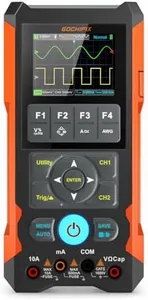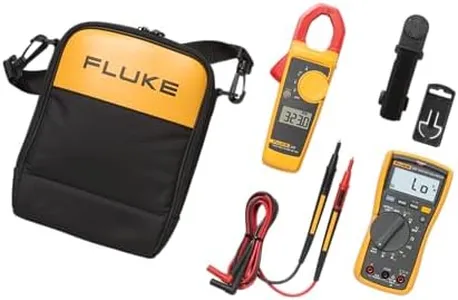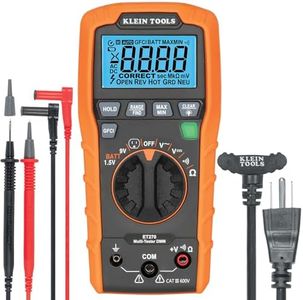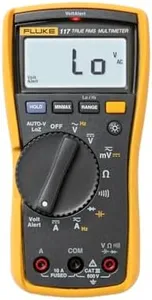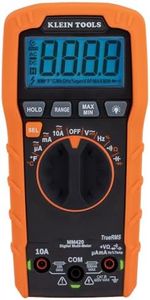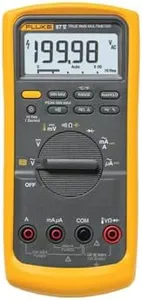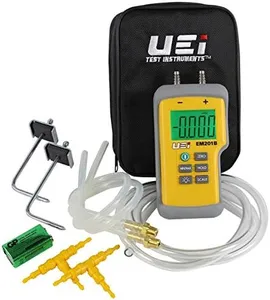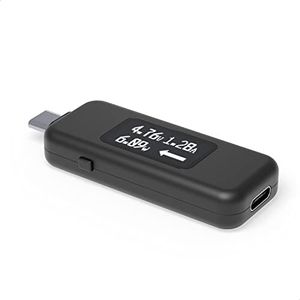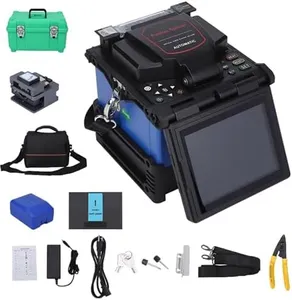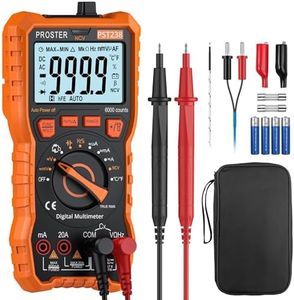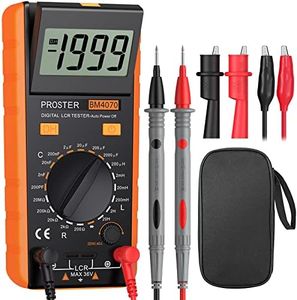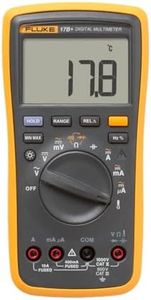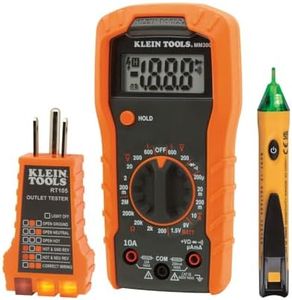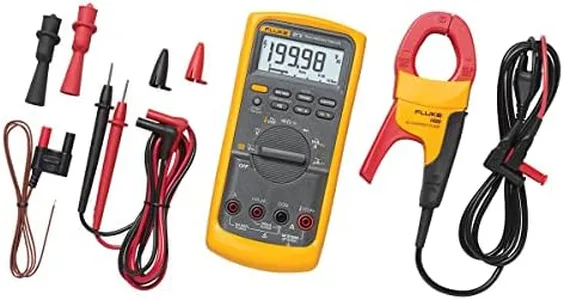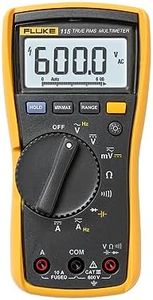10 Best Digital Multimeters 2026 in the United States
Our technology thoroughly searches through the online shopping world, reviewing hundreds of sites. We then process and analyze this information, updating in real-time to bring you the latest top-rated products. This way, you always get the best and most current options available.

Our Top Picks
Winner
Fluke 117/323 Kit Multimeter and Clamp Meter Combo Kit For Residential And Commercial Electricians, AC/DC Voltage, AC Current 400 A, Includes Test Leads, TPAK And Carrying Case
The Fluke 117/323 Kit is a solid choice for electricians working in residential or commercial settings. The 117 multimeter offers accurate measurements of AC/DC voltage and amps, thanks to its true RMS feature, which is ideal for dealing with complex electrical loads without guesswork. Its low input impedance helps avoid false readings from stray voltages, a common issue in electrical work.
The companion 323 clamp meter complements the setup by measuring up to 400 amps of AC current and also handles AC/DC voltage, providing flexibility for various tasks. Both tools provide reliable accuracy and cover a useful range of measurements, essential for troubleshooting and routine checks. The kit includes handy extras like test leads, a TPAK mounting accessory, and a carrying case, making it convenient to transport and use on the job.
Fluke's reputation typically ensures solid safety standards. The weight is light enough for easy handling, and battery power allows cordless use. For those needing a dependable meter combo balancing precision with practical features, this kit performs well, although professionals requiring very high-end lab accuracy or specialized functions might consider more advanced equipment.
Klein Tools ET270 Auto-Ranging Digital Multi-Tester, AC/DC, Resistance, Continuity, GFCI Receptacle Tester with Test Leads and Receptacle Cord
Most important from
6537 reviews
The Klein Tools ET270 is a solid choice if you're looking for a versatile digital multimeter with some handy extras. It measures AC/DC voltage up to 600V and resistance up to 40 megaohms, which covers most household and light professional electrical tasks. Its auto-ranging function means you don’t have to manually select ranges, simplifying the measurement process, but you still have the option to switch to manual if needed. The meter offers good accuracy for general use, and its resolution is sufficient to catch subtle differences in readings.
One standout feature is the receptacle test mode that helps detect common wiring faults and tests GFCI receptacles, which adds an extra layer of electrical safety. It even shows GFCI trip time, useful for troubleshooting. Safety ratings include CAT III and CAT IV with protective caps on the test leads, meaning it’s designed to handle typical home and commercial electrical environments safely. The bright backlit LCD display improves visibility in darker spaces, and convenience features like test lead holders, a kickstand, and an optional magnetic hanger allow for hands-free operation, which is great when working alone.
It also includes a battery test for common household batteries and a circuit breaker finder mode, adding extra value beyond basic multimeter functions. The unit is powered by 2 AAA batteries, which are included, keeping it lightweight and portable. While it covers many bases, this model might not satisfy users needing very high precision or specialized functions found in more advanced meters. The Klein Tools ET270 is a user-friendly and reliable multimeter suited for homeowners, electricians, and DIYers who want a tool that goes beyond basic voltage and resistance measurements, with helpful safety and troubleshooting features included.
Most important from
6537 reviews
Fluke 117 Digital Multimeter, Non-Contact AC Voltage Detection, Measures Resistance/Continuity/Frequency/Capacitance/Min Max Average, Automatic AC/DC Voltage Selection, Low Impedance Mode
Most important from
5041 reviews
The Fluke 117 Digital Multimeter is a solid choice for both professionals and DIY enthusiasts looking for a reliable tool for electrical testing. One of its standout features is the VoltAlert technology, allowing users to detect AC voltage without direct contact, which enhances safety and convenience. The automatic AC/DC voltage selection makes it easy to measure different electrical signals without manual adjustments, catering to varied needs in the field. With a true RMS capability, the Fluke 117 delivers accurate measurements even on non-linear loads, making it particularly useful for modern electrical systems.
In terms of specifications, it offers a decent measurement accuracy of +/-0.5%, which is suitable for most tasks. Its low input impedance helps eliminate false readings caused by ghost voltages, ensuring the reliability of measurements. The large LED backlight is a thoughtful addition, allowing you to work in dimly lit areas without straining your eyes.
The Fluke 117 is an excellent option for those who require precision and versatility in their measurements, particularly electricians and technicians. Its combination of features and dependable performance makes it a worthy investment.
Most important from
5041 reviews
Buying Guide for the Best Digital Multimeters
Choosing the right digital multimeter (DMM) can be a bit overwhelming due to the variety of models and features available. A digital multimeter is an essential tool for anyone working with electrical circuits, whether you're a professional electrician, an electronics hobbyist, or a DIY enthusiast. The key to selecting the best DMM for your needs is understanding the specifications and how they relate to your specific requirements. Here are some important specs to consider when choosing a digital multimeter.FAQ
Most Popular Categories Right Now
